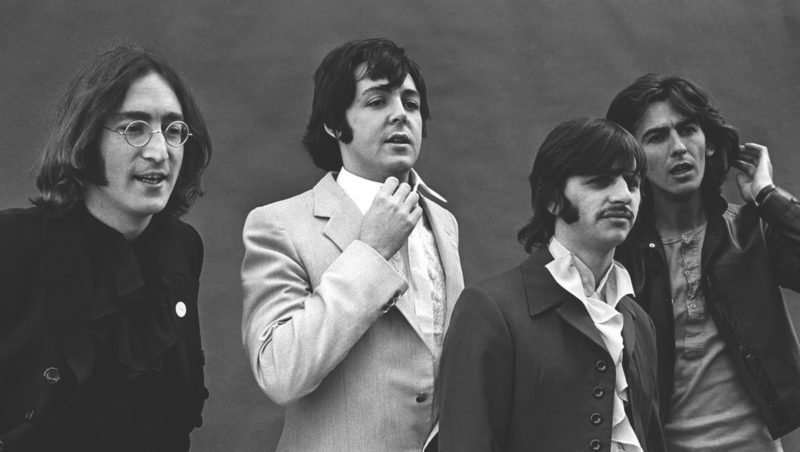The celebration continues. It’s the decade when every Beatles record celebrates half a century of iconic influence and the praising isn’t going to stop anytime soon with the iconic self-titled White Album now turning fifty these days. It’s easy to worship the legacy of the fab four from Liverpool because they basically invented modern day pop music. You’ll find groundbreaking moments on all their albums, especially the ones in the second half of the 60s. The by-accident-invention of sampling on Revolver‘s closing track Tomorrow Never Knows? That quite contemporary breakbeat on the Sgt. Pepper Reprise? The whole production of this LP? Well, there is a story behind pretty much every song these guys ever recorded and there’ve been countless documentaries, articles and books about all of them. So, it must be quite desperate to actually come up with another Beatles-worshipping piece, right?
Yes, maybe but I just wanted to quickly point out one thing that I noticed while giving the White Album a few spins in the past days. I never really did that before, at least not as much as I did with other records from the band. The White Album, of course is a massive chapter of its own in the wild and furious Beatles discography. Recorded during the summer of 1968 it was inspired by the band’s trips to India, drugs and their own egos, slowly drifting apart. By now The Beatles had fully turned into a studio band that was living for the recording process, constantly pushing the young technology to new extremes and by doing that they continue to remain pioneers. However, the harmony and innocence within the world’s dominating pop band was gone. Especially the connection between Lennon and McCartney appeared to be on a low and the band did what many bands do in that situation: recording a massive double album that showcases the individual ideas rather than a collaborative effort. And that also resulted in the strangest and most fascinating aspect of this LP: It doesn’t feel like an album at all, more like a compilation.
From the McCartney driven rockers (Back In The USSR, Happiness Is A Warm Gun), to gentle folk (Blackbird), happy sing-alongs (Ob-La-Di, Ob-La-Da), chamber pop (Martha My Dear), country-infected saloon music (Rocky Racoon), to blues rock (Why Don’t We Do It On The Road?), drugged-out sample experiments (Revolution 9) and gentle string-driven lullabies (Good Night) – everything can be found within this way too long record that consists of thirty songs. There’s a few odd moments on this one but of course also brilliant ones as well. Still, it’s a record that doesn’t follow any red line and narrative, it’s just an outburst of overflowing creativity by George, Paul, Ringo and John. In many ways it feels like a playlist that somehow would also work in the time and age when the world’s currently most successful artist, Drake, releases a record with 25 tracks that also doesn’t seem to follow one coherent concept. If the White Album would be released, the folks might also just release five tracks ahead of the album’s official release – well, or would probably just do a surprise midnight release. That would totally be a thing John Lennon would be up to.
And aside of many other stories based upon this record this is the one that made me giggle the most recently. The White Album might be one of the best albums of all time except for the fact that it doesn’t feel like one. It also puts that whole discussion about ‘the death of the album’ into perspective because if the icons already went for a similar perspective it can’t be that bad. It’s just a small footnote here to hopefully get you on board to stream this record in its entire beauty right now, right here. Because besides all the historic lesson it delivers there’s also simply beautiful and timeless music on it and even half of a century of popular music evolution can’t take that away.



